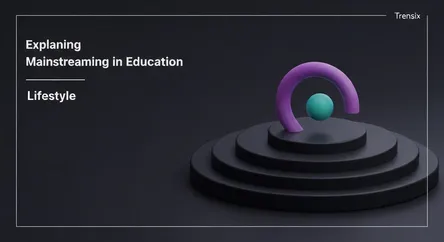Lifestyle
Explaining Mainstreaming in Education

What is mainstreaming? Discover the practice of integrating students with special needs into general education classrooms and why it's a key trend.
What is it?
Mainstreaming is an educational practice where students with special needs spend a portion of their school day in a general education classroom with their peers who do not have disabilities. Unlike full inclusion, where a student is in a general classroom for the entire day, mainstreaming often involves a hybrid approach. Students might join general classes for specific subjects like art or music, or for academic subjects where they can succeed with some support, while receiving more specialized instruction in a separate resource room for other parts of the day. The goal is to provide the 'least restrictive environment' possible, balancing social integration with specialized academic support tailored to the student's individual needs.
Why is it trending?
Mainstreaming is trending due to a global shift towards more inclusive and equitable educational models. It's rooted in civil rights principles, advocating for every child's right to learn alongside their peers. Legislation in many countries, such as the Individuals with Disabilities Education Act (IDEA) in the United States, mandates that schools educate students with disabilities in the least restrictive environment. Furthermore, research highlights the social and academic benefits for all students, promoting understanding, empathy, and diversity from a young age and better preparing everyone for a diverse society.
How does it affect people?
Mainstreaming significantly impacts students, teachers, and the broader school community. For students with special needs, it can boost self-esteem, improve social skills, and provide access to a more challenging curriculum. For general education students, it fosters empathy, reduces fear and prejudice towards disability, and enriches their learning experience by exposing them to different perspectives. However, it also presents challenges for teachers, who must adapt their instructional methods to accommodate a wider range of learning abilities, often requiring additional training, resources, and collaboration with special education professionals to be successful.